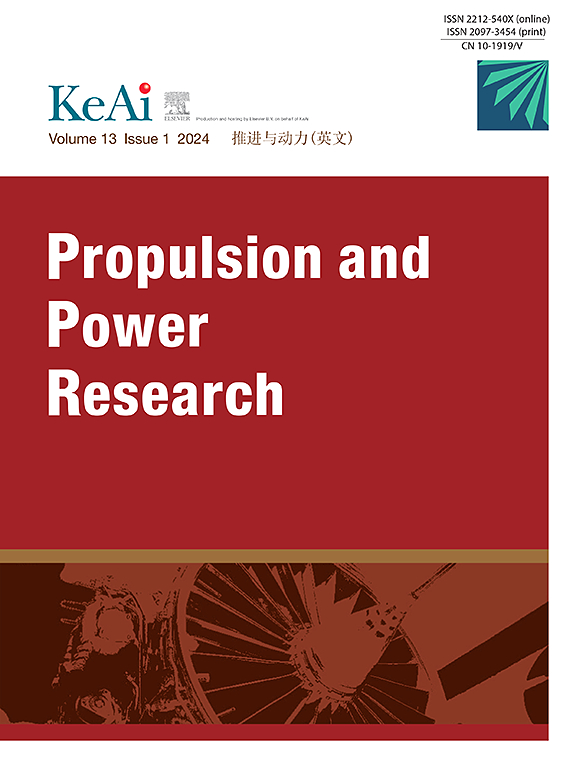Numerical and analytical investigation of vapor flows in a flat plate heat pipe: Effects of length ratio and Reynolds number
IF 5.4
2区 工程技术
Q1 ENGINEERING, AEROSPACE
引用次数: 0
Abstract
Heat pipes are crucial in a wide range of applications, ranging from space satellites and industrial systems to electronic cooling and X-ray tube thermal management. This study introduces a method investigation into vapor flows within a flat plate heat pipe, utilizing the collocation method (CM) and the fourth-order Runge-Kutta-Fehlberg (RKF45) method. Building on previous efforts, this work explores the effects of the evaporator-to-condenser length ratio and Reynolds number on velocity and pressure distributions along the entire heat pipe. The significance of this research lies in its ability to elucidate critical parameters that directly influence heat pipe performance, offering deeper insights that are vital for optimizing design and efficiency. The primary motivation of this study is to fill existing gaps in the literature by developing a comprehensive analytical model that accurately characterizes vapor and liquid flow in asymmetrical flat plate heat pipes. The model's validity is confirmed through a satisfactory agreement with numerical results, underscoring the reliability of the methods used. Notably, the findings reveal that higher Reynolds numbers reduce pressure drop and shift the maximum velocity toward the bottom wick in the evaporation section, providing valuable guidance for future design improvements. Additionally, this research presents a powerful method for solving non-linear ordinary differential equations, offering significant time savings and enabling predictive functions. These contributions are poised to enhance the performance of thermal management systems across various engineering disciplines.
平板热管中蒸汽流动的数值分析研究:长度比和雷诺数的影响
热管在广泛的应用中至关重要,从太空卫星和工业系统到电子冷却和x射线管热管理。本文采用配置法(CM)和四阶龙格-库塔-费贝格法(RKF45)对平板热管内的蒸汽流动进行了研究。在以往工作的基础上,本工作探讨了蒸发器-冷凝器长度比和雷诺数对整个热管速度和压力分布的影响。这项研究的意义在于它能够阐明直接影响热管性能的关键参数,为优化设计和效率提供更深入的见解。本研究的主要动机是通过建立一个准确表征非对称平板热管中蒸汽和液体流动的综合分析模型来填补现有文献的空白。通过与数值结果的满意一致,证实了模型的有效性,强调了所采用方法的可靠性。值得注意的是,研究结果表明,较高的雷诺数降低了压降,并使蒸发段的最大速度向底部芯部移动,这为未来的设计改进提供了有价值的指导。此外,本研究提出了一种求解非线性常微分方程的强大方法,提供了显着的时间节省和实现预测函数。这些贡献将有助于提高各种工程学科的热管理系统的性能。
本文章由计算机程序翻译,如有差异,请以英文原文为准。
求助全文
约1分钟内获得全文
求助全文
来源期刊

Propulsion and Power Research
Multiple-
CiteScore
7.50
自引率
5.70%
发文量
30
期刊介绍:
Propulsion and Power Research is a peer reviewed scientific journal in English established in 2012. The Journals publishes high quality original research articles and general reviews in fundamental research aspects of aeronautics/astronautics propulsion and power engineering, including, but not limited to, system, fluid mechanics, heat transfer, combustion, vibration and acoustics, solid mechanics and dynamics, control and so on. The journal serves as a platform for academic exchange by experts, scholars and researchers in these fields.
 求助内容:
求助内容: 应助结果提醒方式:
应助结果提醒方式:


